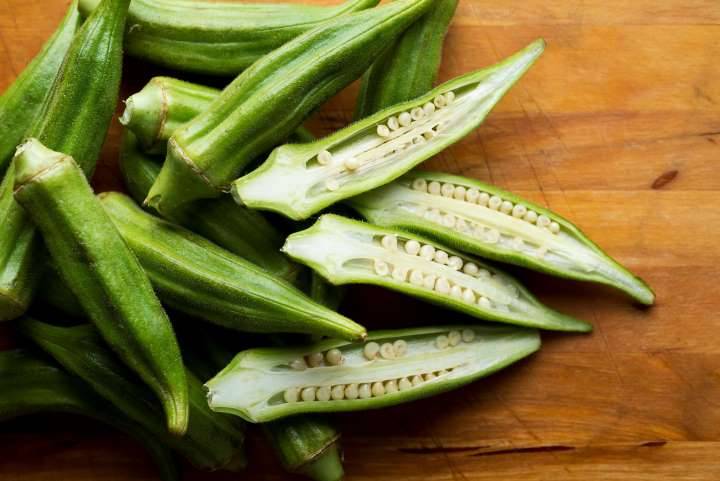
Okra or ‘Lady Finger’ or ‘Bhindi’ is one of the most loved and healthy vegetables in India. Moreover, it is a vegetable that can be grown almost in every part of the country. The three main planting seasons for Okra are February-April, June-July and October-November. At present, there are many good varieties of Okra that gives good yield to the farmers.
How to Grow Okra
Here's the complete guide and process of growing lady finger;
Planting
When to Plant Okra
-
You can start okra seeds indoors in peat pots under full light 3 to 4 weeks before the last spring frost date
-
In warmer areas, you can also start okra directly in your garden 3 to 4 weeks before the last spring frost date as long as you cover the plants with a cold frame or grow tunel until the weather warms up fully. Make sure that the covering is 2 to 3 feet tall so that the plants have room to grow.
-
If you do not start your okra plants early, wait until there is stable, warm weather. You can plant okra in the garden when the soil has warmed to about 65° or 70°F—the warmer, the better.
Choosing and Preparing a Planting Site
-
As a warm-weather crop, okra appreciates full sun.
-
Okra is adaptable and will grow in most soils, though it performs best in well-drained soil that’s rich in organic matter.
-
Soil should ideally be on the acidic side, with a pH between 5.8 and 7.0.
How to Plant Okra
-
If you are planting okra transplants, be sure to space them 1 to 2 feet apart to give them ample room to grow.
-
Plant okra seeds about ½ to 1 inch deep and 12 to 18 inches apart in a row. You can soak the seeds overnight in tepid water to help speed up germination.
-
Okra plants are tall, so space out the rows 3 to 4 feet apart.

Care and management
-
Eliminate weeds when the plants are young, then mulch heavily to prevent more weeds from growing. Apply a layer of mulch 2 to 3 inches high.
-
You should side-dress the plants with 10-10-10, aged manure, or rich compost (½ pound per 25 feet of row). You could also apply a balanced liquid fertilizer monthly. Learn more about soil amendment and preparing soil planting.
-
When the seedlings are about 3 inches tall, thin the plants so that they are 12 to 18 inches apart if they aren’t already.
-
Keep the plants well-watered throughout the summer months; 1 inch of water per week is ideal, but use more if you are in a hot, arid region.
-
After the first harvest, remove the lower leaves to help speed up production.
Know the Pests/ Diseases
-
Aphids
-
Corn earworms
-
Stinkbugs
-
Fusarium wilt
How to Harvest Okra
-
The first harvest will be ready about 2 months after planting.
-
Harvest the okra when it’s about 2 to 3 inches long. Harvest it every other day.
-
Cut the stem just above the cap with a knife; if the stem is too hard to cut, the pod is probably too old and should be tossed.
-
Wear gloves and long sleeves when cutting the okra because most varieties are covered with tiny spines that will irritate your skin, unless you have a spineless variety. Do not worry: this irritation will not happen when you eat them.
How To Store Okra
-
To store okra, put the uncut and uncooked pods into freezer bags and keep them in the freezer. You can then prepare the okra any way you like throughout the winter months.
-
You can also can okra to have it throughout the winter.
Recommended Okra Varieties
-
‘Annie Oakley II’, which takes 52 days to mature and has spineless pods. It grows to about 4.5 feet tall.
-
‘Park’s Candelabra Branching’, which is a base-branching okra plant. This type of branching makes picking easy.
-
‘Cajun Delight’, which has spineless, dark-green pods and grows to about 4 feet tall.
-
‘Louisiana Green Velvet’ is good for big areas; it is vigorous and its plants grow to be 6 feet tall. It is also smooth and spineless.
Wit & Wisdom
-
Okra is sometimes called “lady’s fingers” thanks to the vegetable’s long, slender shape.
Plant characteristics
It is a tropical direct sown vegetable with a duration of 90-100 days. This crop belongs to the family Malvaceae. A well-drained deep soil is ideal for its growth. Optimum temperature range is 25-30 0C.
Seeds and cultivation
The three main planting seasons for Okra are February-March, June-July and October-November.
Seed rate
The seed rate is 8.5 kg/ha for the summer crop sown in February-March and 7 kg/ha for kharif crop.
Storage of seeds
Packing of okra seeds in polythene cover (700 gauge) increases the storage life up to 7 months.











